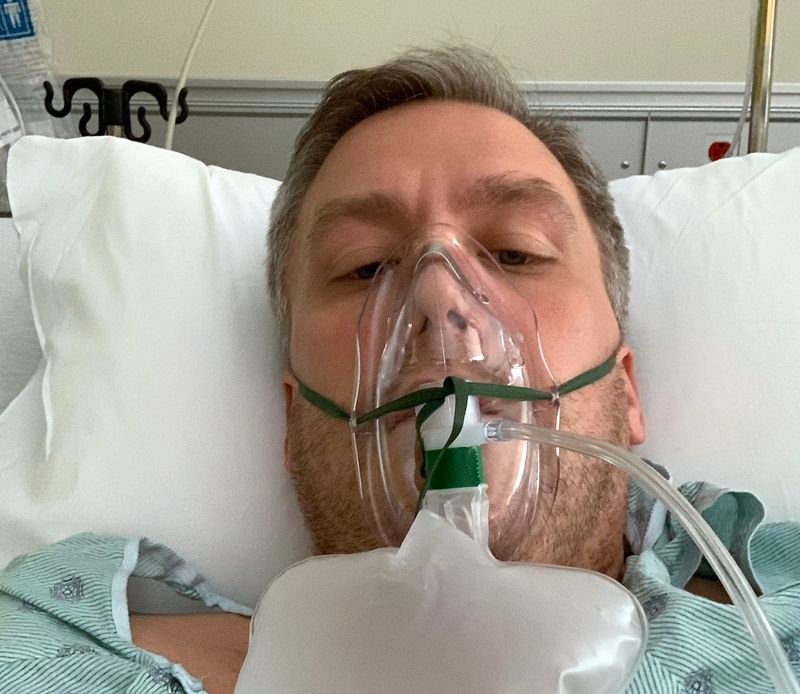Dr. Joseph Fair, 42, an NBC News contributor who has responded to multiple outbreaks around the world, has been hospitalised with the coronavirus despite being in good health and taking precautions. He believes that he contracted the virus through his eyes on a crowded flight.
“I had a mask on, I had gloves on, I did my normal wipes routine … but obviously, you can still get it through your eyes,” Fair said on a TV show from his hospital bed. “And, of course, I wasn’t wearing goggles on the flight.
“That’s one of the three known routes of getting this infection that we just don’t pay a lot of attention to. We tend to pay attention to the nose and mouth, because that is the most common route,” he said. “But you know, droplets landing on your eyes are just as infectious.”
Watch @hodakotb’s full interview with @curefinder, an NBC News contributor and infectious disease expert who is battling coronavirus in the hospital. Dr. Fair describes about how he contracted COVID-19, and shares a warning for others to take precautions. pic.twitter.com/b5CSQ458kx
— TODAY (@TODAYshow) May 14, 2020
‘You know, that’s one of the three known routes of getting this infection that we don’t pay a lot of attention to. We tend to focus on the nose and mouth because that’s the most common route.
‘Droplets landing on your eyes are just as infectious and of course I wasn’t wearing goggles on the flight.’
Although airlines have been operating on reduced schedules and at reduced capacities, Dr. Fair said he arrived on April 24 to find that wasn’t the case for his flight.
Similar cases have been reported in the news during the pandemic.
‘I think Savannah reported yesterday, but it was very true, you know, airlines, they said they were social distancing. But they really weren’t on my flight at all,’ Dr. Fair told Hoda Kotb.
‘Instinctively I probably should have gotten off the flight when I saw that. But they had us packed in like sardines and definitely not ideal, you know, when you’re trying to combat a pandemic and trying to slow it down.’
Dr. Fair is certain he caught COVID-19 on the plane because he went directly home but developed symptoms three to four days later, which is typical for the infections.
He said it felt like a moderately severe flu for the first week but after four days he realized he had developed ‘kind of a walking pneumonia’ which is a secondary infection as a result of the virus.
Dr. Fair said that progressively got worse over a few days and a week after he first experienced symptoms he was only able to breathe about 25% of the air I was trying to take in.
Dr. Fair said when he arrived at hospital he chose to have a high volume of oxygen over being intubated, which was a last resort.
How does the coronavirus enter through eyes?
“It usually happens because of contact,” NBC News medical correspondent Dr. John Torres told TODAY. “You touch something, and you rub your eye and you get it in that way.”
Another, less common way COVID-19 eye transmission can occur is if someone coughs or sneezes on you and you don’t protect your eyes.
The coronavirus then binds to receptors on the surface of the eyes and spreads throughout the body, Torres explained. He added that receptors in the nose distribute virus droplets in a similar way.
It’s important to note, though, that they don’t work exactly the same. For example, when a virus lingers in the air after someone sneezes, its aerosols can enter the nose and mouth and infect the body. This “isn’t a concern” for the eyes, Torres said






